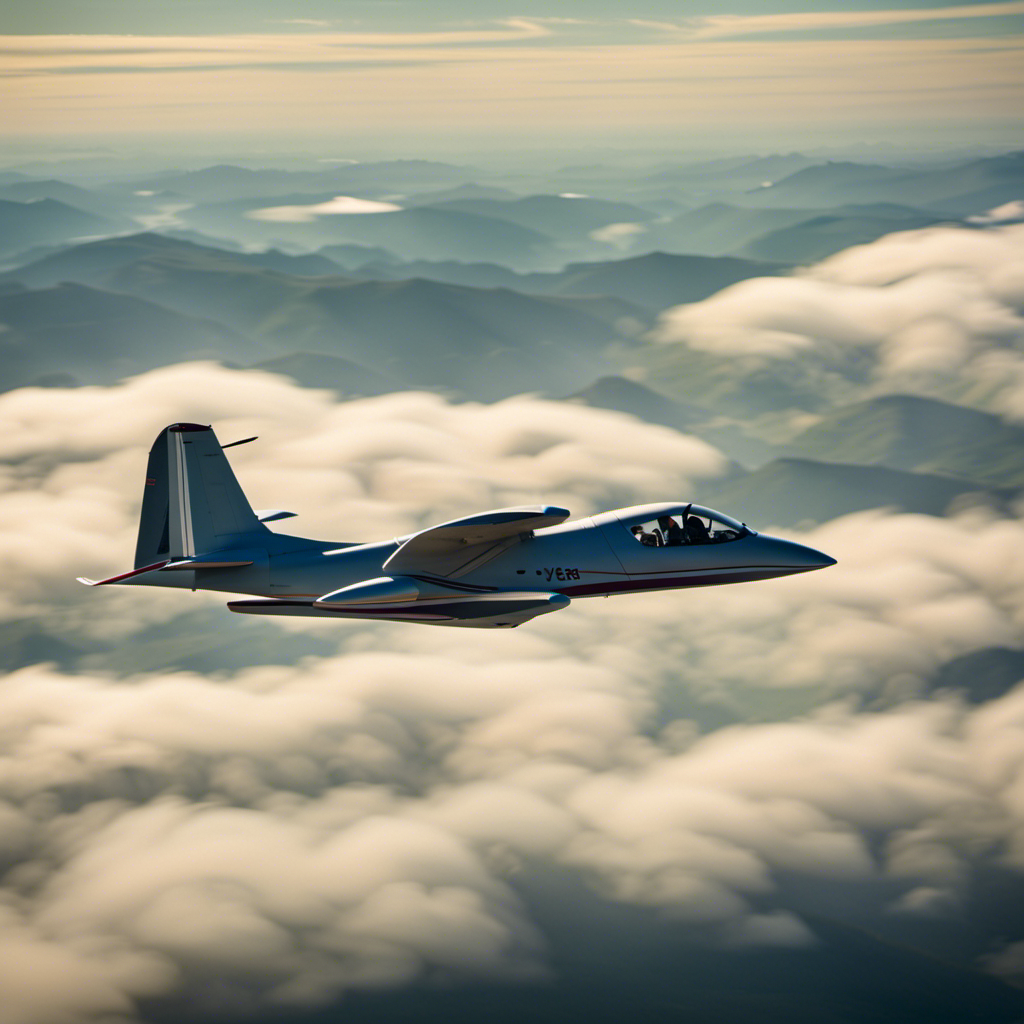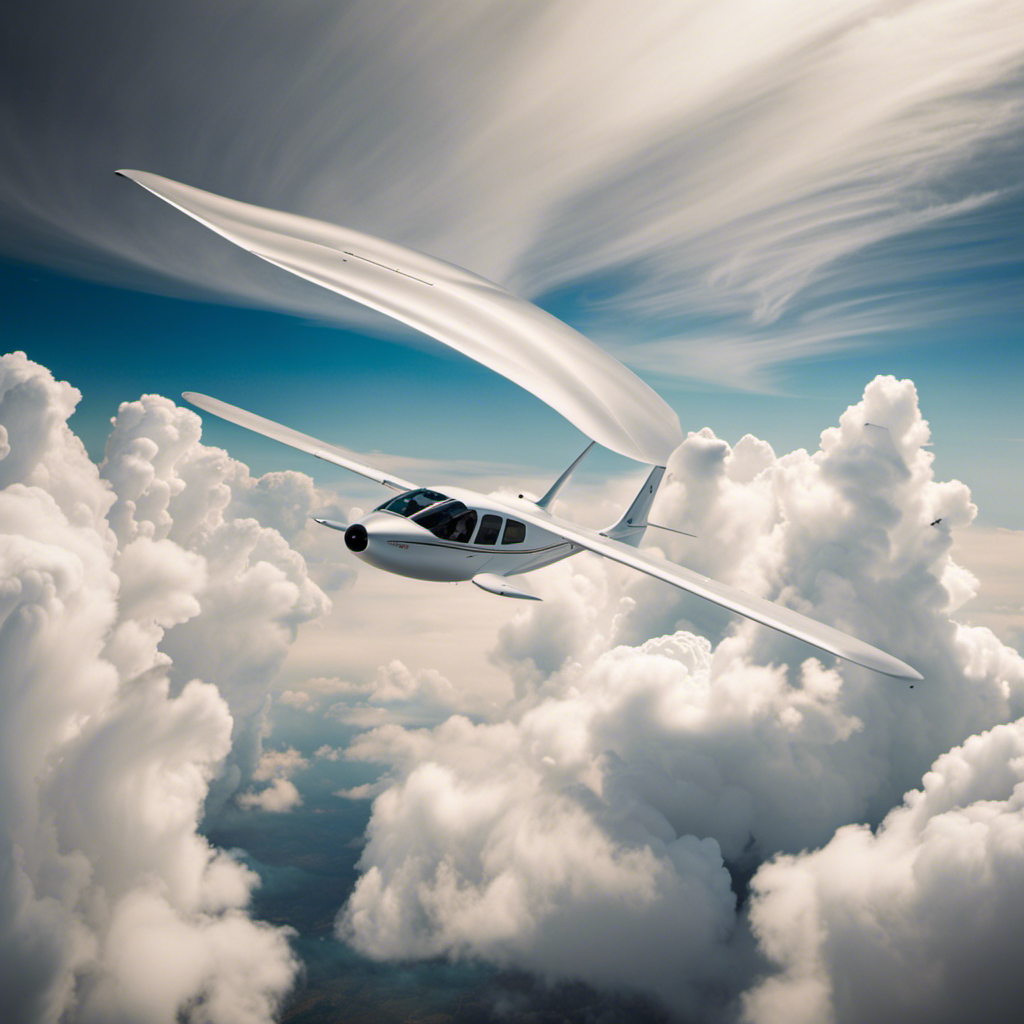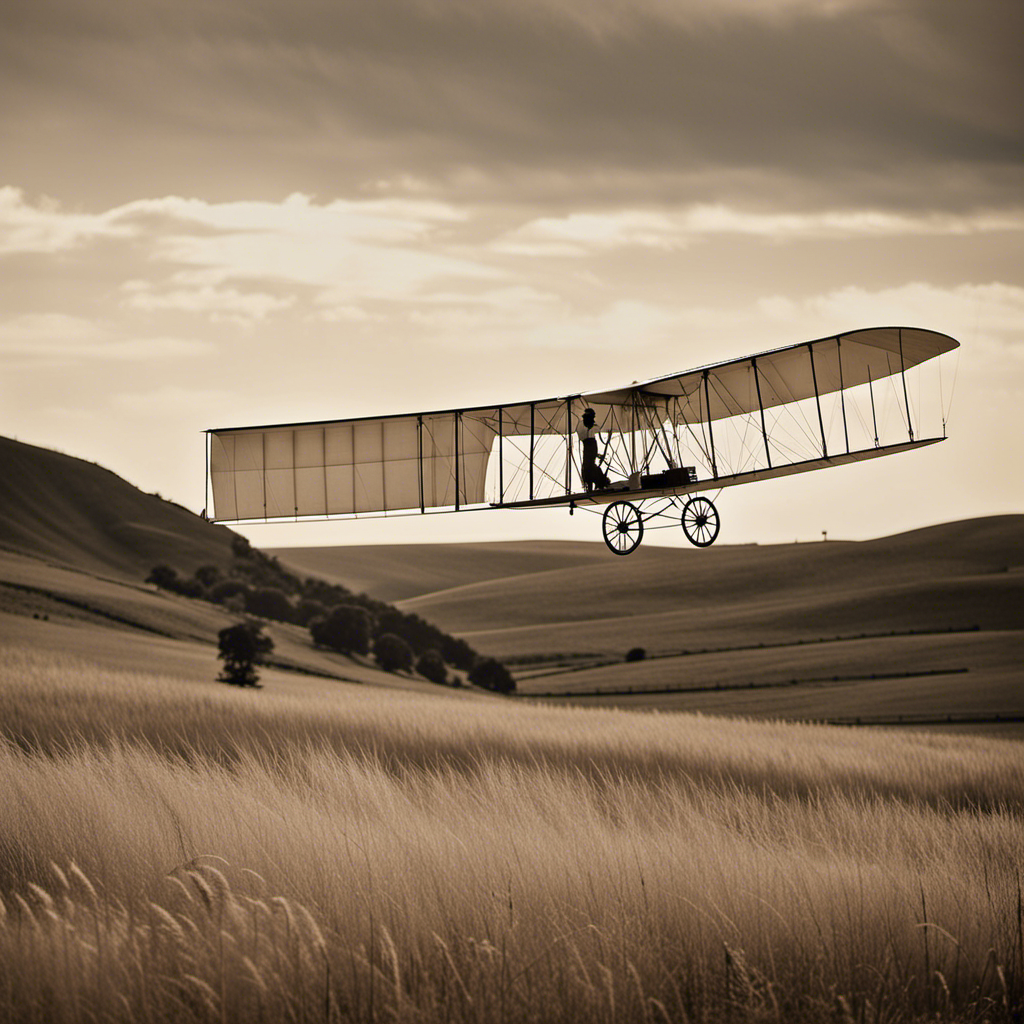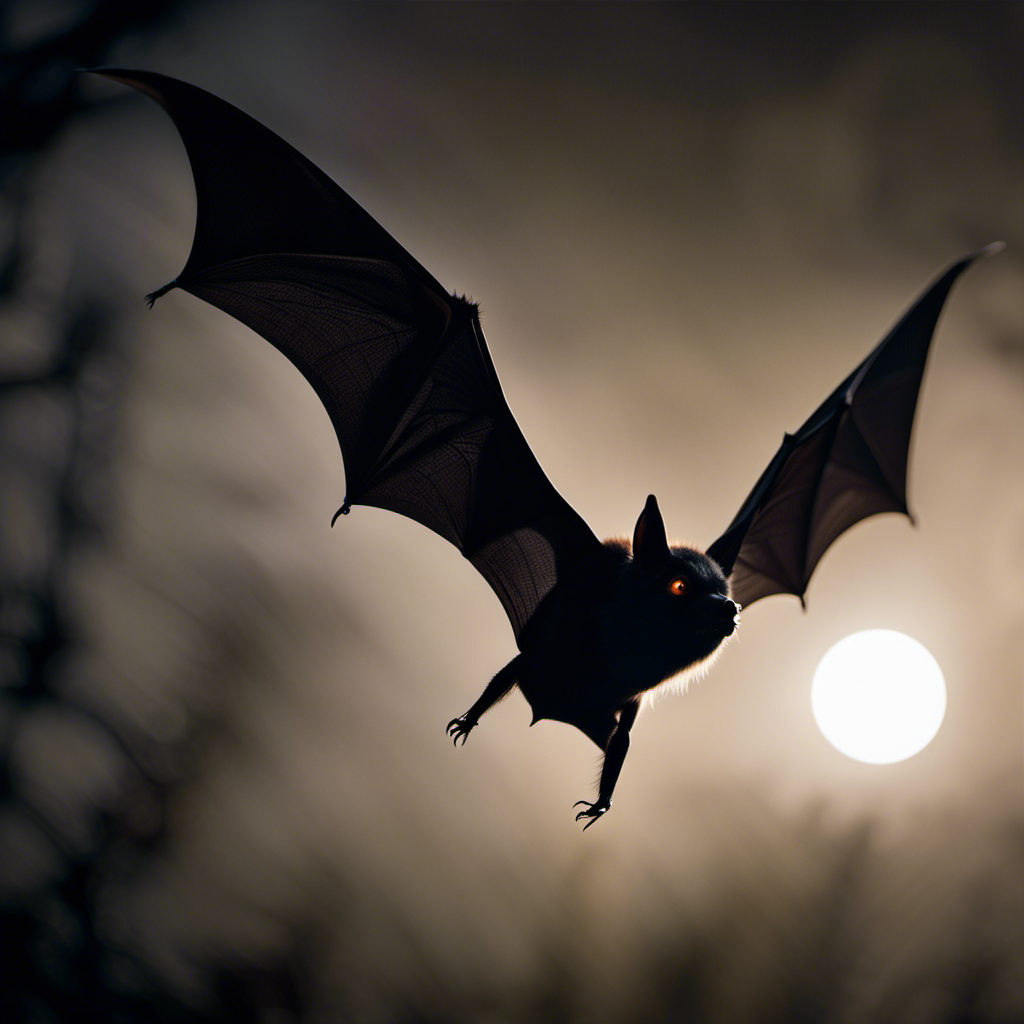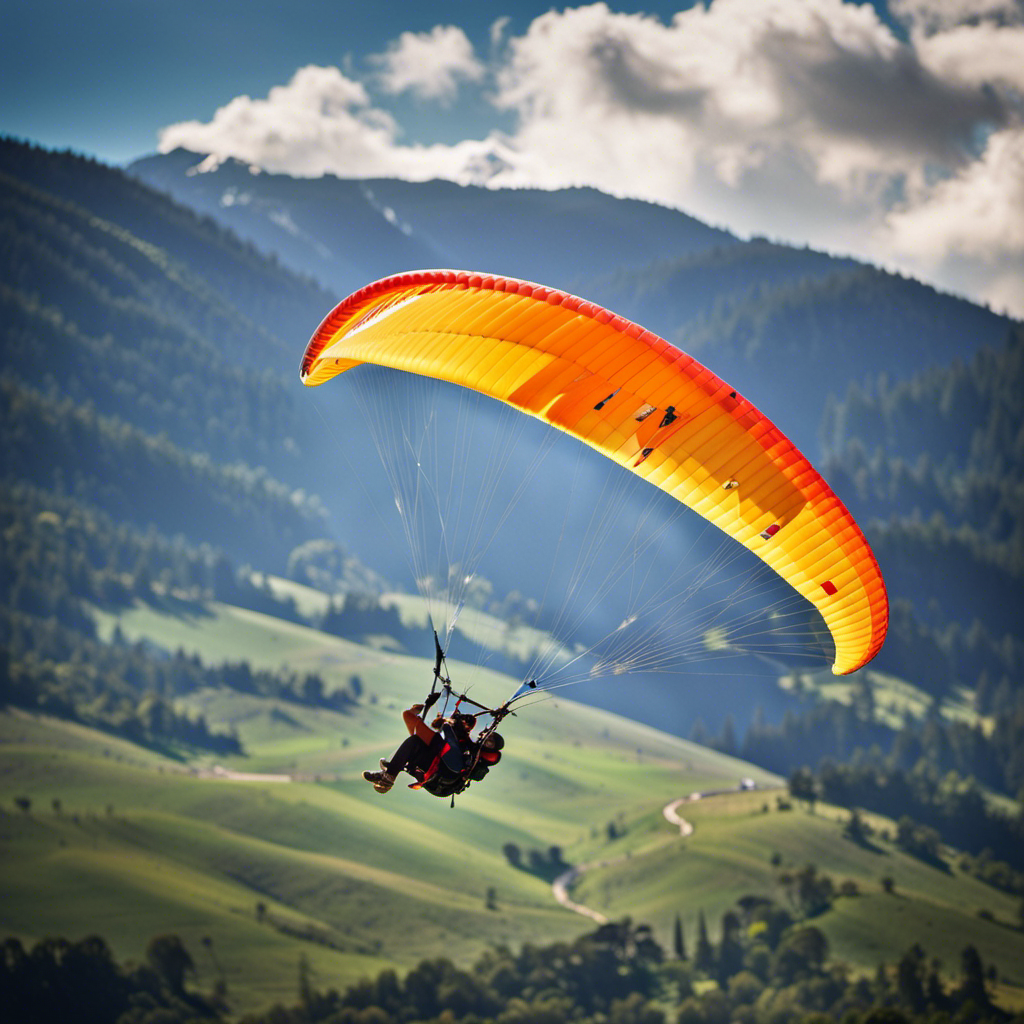As an individual who flies gliders, I am often amazed by the feeling of freedom and thrill that comes from soaring through the skies.
But one question that always comes up is, ‘How many passengers can fly in a glider?’
In this article, we’ll explore the different types of gliders and their passenger capacities.
From single-seat adventures to tandem flights and group experiences, we’ll delve into the factors that influence passenger capacity and the safety considerations that come with it.
So fasten your seatbelt and join me on this journey into the world of glider passenger operations.
Key Takeaways
- The maximum passenger capacity in a glider is influenced by factors such as the size and layout of the cockpit, weight limitations of the glider, and weight distribution of passengers.
- Group training and shared experiences in gliding can provide benefits such as accelerated training progress, teamwork and communication skills, and expanded aviation network.
- Safety measures in glider passenger operations include regular maintenance checks, adherence to safety standards, comprehensive safety briefings, clear communication of safety procedures, and comfortable seating arrangements with access to emergency equipment.
- Future advancements in glider technology may include improved seating design, larger windows for panoramic views, integrated entertainment systems and climate control, and advancements in safety measures such as state-of-the-art emergency systems and upgraded parachute systems.
Overview of Gliding as a Recreational Activity
As a recreational activity, gliding allows you to experience the thrill of flying without an engine. Glider clubs and glider training programs are the perfect way to get involved in this exciting sport.
Glider clubs offer a supportive community of fellow enthusiasts who share a passion for soaring through the skies. They provide opportunities for group flights, competitions, and social events.
Glider training programs are designed to teach you the necessary skills and knowledge to become a proficient glider pilot. These programs typically include ground school instruction, flight training, and the opportunity to earn your glider pilot license.
Understanding the basics of glider design is essential to becoming a competent pilot, so let’s delve into the mechanics of how gliders are designed and built.
Understanding the Basics of Glider Design
Glider design involves understanding the basics to ensure optimal performance. To achieve this, several key factors must be considered:
-
Glider aerodynamics: The shape and design of the glider’s wings, fuselage, and tail greatly influence its flight characteristics. Streamlined wings with a high aspect ratio minimize drag and increase lift efficiency.
-
Structural design: Gliders need to be lightweight yet strong enough to withstand the forces experienced during flight. The materials used, such as carbon fiber or fiberglass, must be carefully chosen to balance weight and durability.
-
Wing loading: The weight of the glider divided by its wing area, known as wing loading, affects its maneuverability and stall speed. Lower wing loading allows for slower flight and better thermaling capabilities.
-
Control surfaces: The placement and size of a glider’s ailerons, elevators, and rudder play a crucial role in maneuverability and stability.
Understanding these aspects of glider design is essential for pilots to maximize their glider’s performance. As we transition into the next section, we will explore the role of weight and balance in glider operations.
The Role of Weight and Balance in Glider Operations
To ensure safe and efficient glider operations, it is essential to understand the importance of weight and balance. The role of weight and balance in the safety of glider flights cannot be overstated. Weight refers to the total mass of the glider, including the pilot and any additional equipment or ballast. Balance, on the other hand, refers to the distribution of this weight throughout the aircraft. Maintaining the correct center of gravity is crucial for stability during flight. If the weight is not properly distributed or the center of gravity is off, it can lead to instability and potentially dangerous situations. Therefore, maintaining the proper weight and balance is essential for the overall safety of glider operations.
Now, let’s move on to single-seat gliders: a solo adventure in the skies.
Single-Seat Gliders: A Solo Adventure in the Skies
Get ready for an exhilarating solo adventure in the skies with single-seat gliders. Solo flying in these gliders provides a thrill-seeking experience that many aviation enthusiasts seek. Here are four reasons why solo flying in a single-seat glider is an incredible experience:
-
Ultimate Control: Being the only person in the glider allows you to have complete control over every aspect of the flight. You get to be the pilot and make all the decisions, which adds to the sense of freedom and empowerment.
-
Intense Focus: With no distractions from passengers or instructors, you can fully immerse yourself in the flying experience. This heightened focus allows you to fine-tune your skills and truly connect with the aircraft and the elements.
-
Personal Achievement: Solo flying in a single-seat glider is a significant milestone for any pilot. It represents a culmination of training, skill development, and confidence-building, making it an accomplishment to be proud of.
-
Pure Adrenaline: The rush of adrenaline you experience during solo flight is unmatched. As you soar through the skies, feeling the wind beneath your wings, you’ll be filled with a sense of excitement and exhilaration that only solo flying can provide.
Now, let’s explore the next section about ‘two-seat gliders: sharing the thrill with a passenger,’ where we can discover the joy of flying with a companion.
Two-Seat Gliders: Sharing the Thrill with a Passenger
Flying in a two-seat glider allows you to share the thrill of soaring through the skies with a passenger. It’s an incredible experience that not only lets you enjoy the freedom of flight but also creates a bond and shared memories with your companion.
Two-seat gliders are versatile aircraft that provide opportunities for training and learning. They are commonly used for flight instruction, allowing students to learn the intricacies of gliding while having an instructor by their side.
Additionally, the presence of a passenger in a two-seat glider opens up avenues for sharing experiences and exploring new horizons together. Whether it’s a scenic joyride or an adventurous cross-country flight, having a passenger adds to the enjoyment and camaraderie.
Gliding in a two-seater not only offers training opportunities but also enhances the social aspect of flying, making it a perfect activity for like-minded individuals to connect and share their passion for aviation.
The Benefits of Gliding as a Social Activity
When you glide with others, you can form lasting connections and build a sense of camaraderie through shared experiences in the sky. Gliding is not just about the thrill of flying; it also offers numerous benefits as a social activity.
One of the key advantages is the opportunity to meet like-minded individuals who share your passion for aviation. Through gliding clubs and events, you can connect with a diverse community of pilots and enthusiasts, exchanging stories, tips, and knowledge.
Engaging in gliding as a social activity can also enhance your overall well-being, as it provides a sense of belonging and support. The bond that forms among gliders can be incredibly strong, creating lifelong friendships and a network of support within the aviation community.
Transitioning to the topic of multi-seat gliders: group experiences and training flights, let’s explore the possibilities of flying with others in a glider.
Multi-Seat Gliders: Group Experiences and Training Flights
Joining others in a glider can create memorable shared experiences and provide valuable training opportunities. When flying in a multi-seat glider as part of a group, you not only get to enjoy the thrill of gliding but also benefit from the collective knowledge and expertise of your fellow passengers.
Here are some reasons why group training and shared experiences in a glider are invaluable:
- Enhanced learning: Flying with experienced pilots allows you to observe their techniques and learn from their expertise, accelerating your own training progress.
- Collaboration: Working together with other passengers fosters teamwork and communication skills, which are essential in aviation.
- Networking: Building connections with other glider enthusiasts can open doors to new opportunities and expand your aviation network.
By participating in group training and sharing experiences, you gain a deeper understanding of gliding and develop skills that will benefit you throughout your flying journey.
Now, let’s explore the factors influencing the maximum passenger capacity, taking into account the design and weight limitations of the glider.
Factors Influencing the Maximum Passenger Capacity
The maximum number of people a glider can accommodate depends on its design and weight restrictions. Several factors influence the maximum capacity of a glider.
Firstly, the size and layout of the cockpit play a crucial role. Gliders with larger cockpits can accommodate more passengers compared to those with smaller ones.
Additionally, the weight of the glider itself is a significant factor. Gliders have weight limits, and exceeding these limits can compromise the safety and performance of the aircraft.
Furthermore, the weight distribution of passengers is essential to maintain the glider’s balance and stability during flight. Pilots must consider these factors when determining the maximum capacity of a glider to ensure a safe and enjoyable experience for everyone on board.
Moving on to safety considerations in glider passenger operations, it is crucial to prioritize the well-being of all individuals involved.
Safety Considerations in Glider Passenger Operations
To ensure a safe experience for everyone on board, you should prioritize the well-being of all individuals involved in glider passenger operations. Implementing proper safety measures is crucial to enhance the overall passenger experience. This involves conducting regular maintenance checks on the glider to ensure its airworthiness and adherence to safety standards. Additionally, providing comprehensive safety briefings to passengers before the flight can help them understand emergency procedures and potential risks.
| Safety Measures | Passenger Experience |
|---|---|
| Regular maintenance checks | Clear communication of safety procedures |
| Adherence to safety standards | Comfortable seating arrangements |
| Comprehensive safety briefings | Access to emergency equipment |
The Future of Glider Technology and Passenger Capacity
As technology advances, we can expect glider capacity to increase, allowing for more people to enjoy the thrill of soaring through the skies. Future advancements in glider technology will focus on enhancing passenger comfort and safety.
-
Improved seating design:
-
Ergonomic seats that provide better support and minimize fatigue during long flights.
-
Adjustable headrests and armrests for personalized comfort.
-
Cushioned seats with advanced padding and ventilation systems for optimal temperature control.
-
Enhanced cabin features:
-
Larger windows for panoramic views.
-
Integrated entertainment systems for a more enjoyable experience.
-
Climate control systems to ensure a comfortable temperature throughout the flight.
-
Advanced safety measures:
-
State-of-the-art emergency systems and communication devices.
-
Reinforced structures to withstand extreme conditions.
-
Upgraded parachute systems for added safety during emergencies.
These advancements will revolutionize glider travel, making it a more accessible and enjoyable experience for passengers.
Frequently Asked Questions
Can children fly in a glider?
Flight training for children in gliders is possible, but safety considerations must be taken into account. It is important to ensure that children are physically and mentally prepared for the experience, and that proper supervision is provided throughout the flight.
Are there any restrictions for pregnant women to fly in a glider?
Safety precautions for pregnant women in glider flights include consulting with a healthcare professional and ensuring proper seat belt usage. Potential risks and considerations include changes in cabin pressure and the potential for turbulence.
Is there a minimum or maximum weight limit for glider passengers?
There is a minimum weight limit for glider passengers to ensure safe operation and control. Similarly, there is a maximum weight limit to maintain the aircraft’s structural integrity and performance.
Can people with disabilities participate in glider flights?
People with disabilities can participate in glider flights with accessible accommodations and safety measures. For example, a pilot in California modified a glider to accommodate a passenger with limited mobility, ensuring a safe and enjoyable experience.
Are there any age restrictions for glider passengers?
Age restrictions for glider passengers vary depending on the country and safety guidelines. While there is no set minimum age, it is generally recommended that passengers be at least 12 years old to ensure their safety during the flight.
Conclusion
In conclusion, gliding is an exhilarating recreational activity that offers a unique experience in the skies. Whether flying solo in a single-seat glider or sharing the thrill with a passenger in a two-seat or multi-seat glider, the capacity for passengers varies.
While safety considerations and weight and balance play a crucial role, the future of glider technology holds exciting possibilities for increasing passenger capacity.
So strap in, hold on tight, and get ready for a breathtaking journey that will leave you soaring higher than ever before!
Orion, better known as “Jetstream,” is the voice that brings the stories of the skies to life. His fascination with aviation began at a young age, sparked by his father’s tales of flying and adventure. Orion’s journey into the world of gliding was serendipitous, and from the moment he took his first glider flight, he knew he had found his calling.
